There’s something magical about turning one humble sweet potato (or, as we call it here in New Zealand, kumara) into an entire harvest. With a little patience, you can sprout your own sweet potato slips — the rooted shoots that grow from a tuber — and plant them out into your garden for a bumper crop. Learning how to grow sweet potato slips is budget-friendly, fun, and one of those gardening tasks that makes you feel truly self-sufficient.
I still remember the first time I tried this. I tucked a couple of sprouting kumara from my potato basket into soil on my windowsill and waited, not really sure what would happen. Eight weeks later, I had a dozen green shoots sprouting from the kumara, ready to plant out! If you’ve been wondering how to start, in this post I’ll show you how to grow sweet potato slips at home — complete with photos from my own greenhouse.
TL;DR Summary
How to Grow Sweet Potato Slips
- Sweet potatoes (kumara) are grown from slips (shoots) rather than whole tubers.
- Place a sprouting sweet potato in soil and keep it warm until slips appear (6–8 weeks).
- Twist slips off, root them in water or soil, then plant out after the last frost.
- Plant slips in a mound, J-shaped and angled toward the rising sun for better yields.
- Harvest before the first frost, cure for storage, and enjoy your homegrown sweet potato!
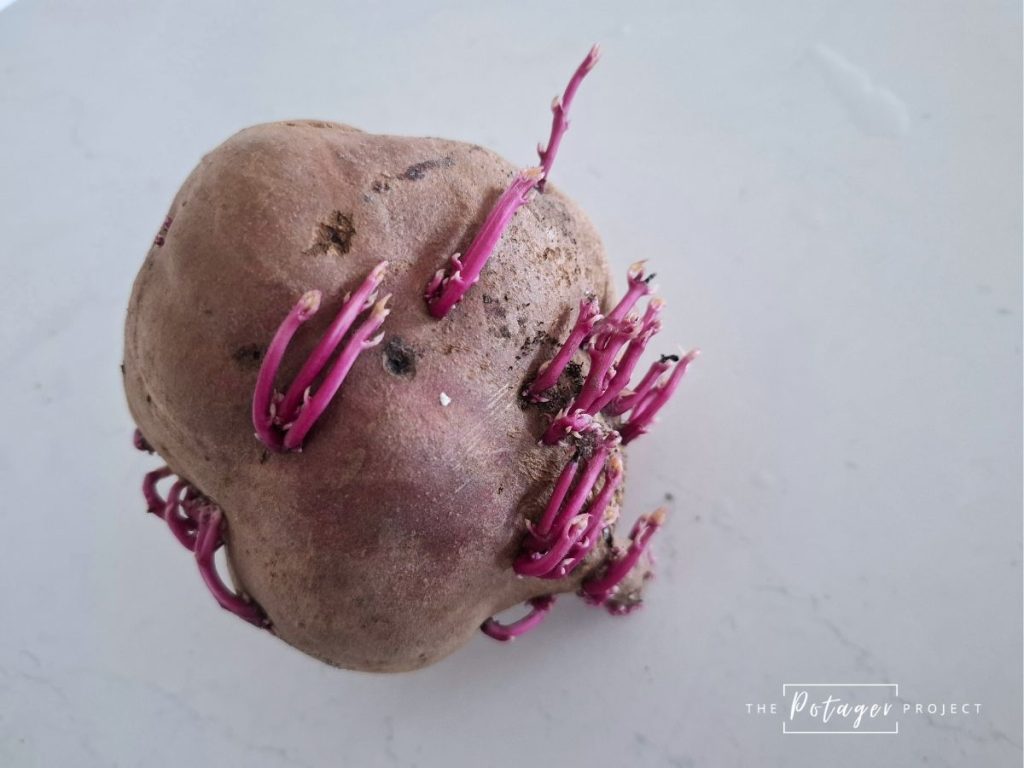
What Are Sweet Potato Slips?
Unlike regular potatoes, which are planted as whole tubers, sweet potatoes are grown from slips. These are the leafy shoots that sprout from the tuber. Each slip, once rooted, becomes its own plant, and each plant can yield half a dozen or more sweet potatoes. That means one tuber can give you dozens of new sweet potatoes!
When to Start Sprouting Your Sweet Potato Slips
You’ll need approximately 8–10 weeks from planting your sprouting sweet potato until slips are ready to plant. Start your sweet potatoes in late winter or very early spring, so they’re ready to transplant after your last frost date. In cooler climates, start earlier and keep them warm indoors or in a greenhouse like I do.
Sprouting Methods: Soil vs. Water
There are two classic ways to sprout sweet potato slips:
1. Soil Method (my favourite)
- Place sweet potato/ kumara in a tray or pot of potting soil.
- Bury halfway, leaving the top exposed or simply place on top of the soil.
- Keep soil moist and warm 68–77 °F (20–25°C).
- Use a greenhouse, sunny windowsill, or a heat mat.
2. Water Method (fun for kids)
- Insert toothpicks in the sides and suspend the potato over a jar of water.
- Keep the bottom half submerged in the water.
- Change the water every few days.
- You’ll soon see sprouts start to grow.
Both methods work, but soil-grown slips are sturdier and need less fuss.
How to Grow Sweet Potato Slips at Home
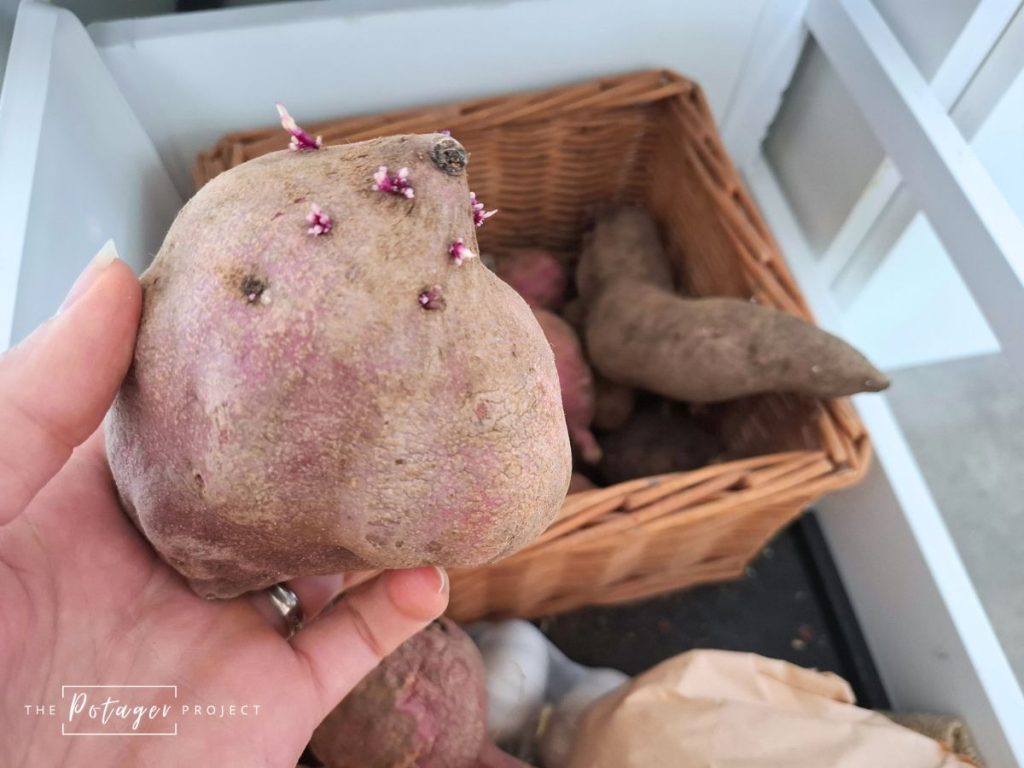
Choosing Sweet Potatoes for Slips
Saved some kumara from last year’s harvest? Perfect. If not, you can use supermarket sweet potato/ kumara – just look for organic if possible, as some imported ones are treated to prevent sprouting.
Choose small to medium-sized tubers (about the size of your palm). Bigger “show” potatoes aren’t always the best for sprouting; the smaller ones often produce stronger shoots.
Starting Your Slips
1) Prepare a tray or pot with quality potting mix (moisture-retentive but free-draining).
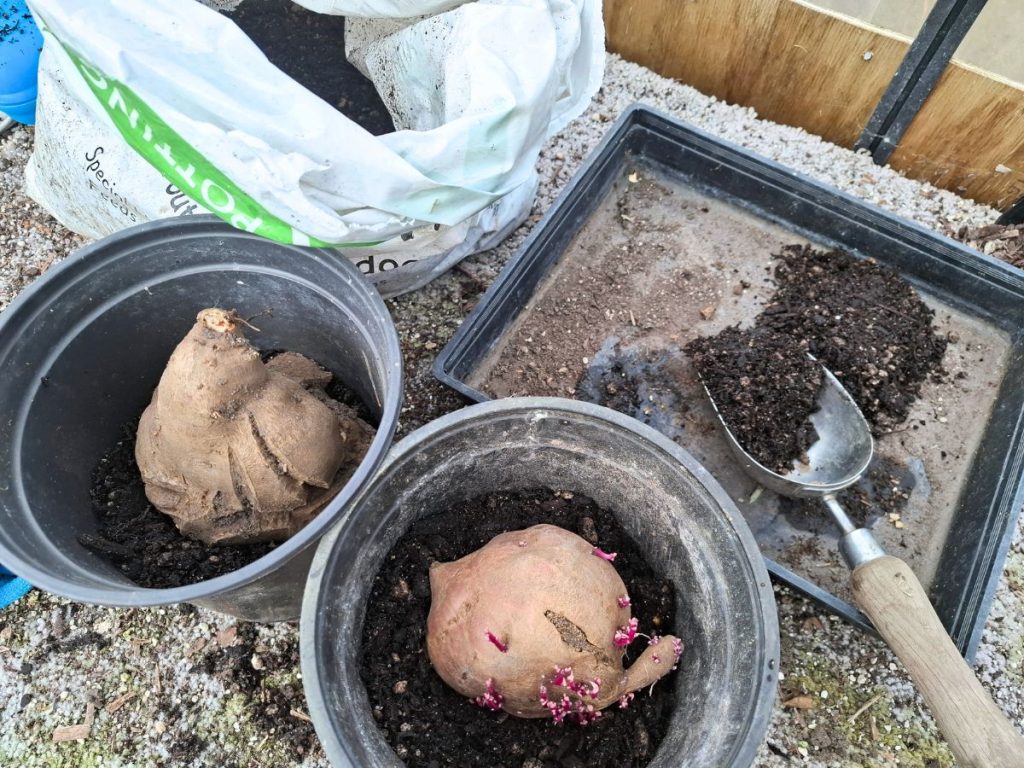
2) Place the kumara in the soil, covering two-thirds of the tuber. The top can stick out.
3) Keep the soil moist but not soggy.
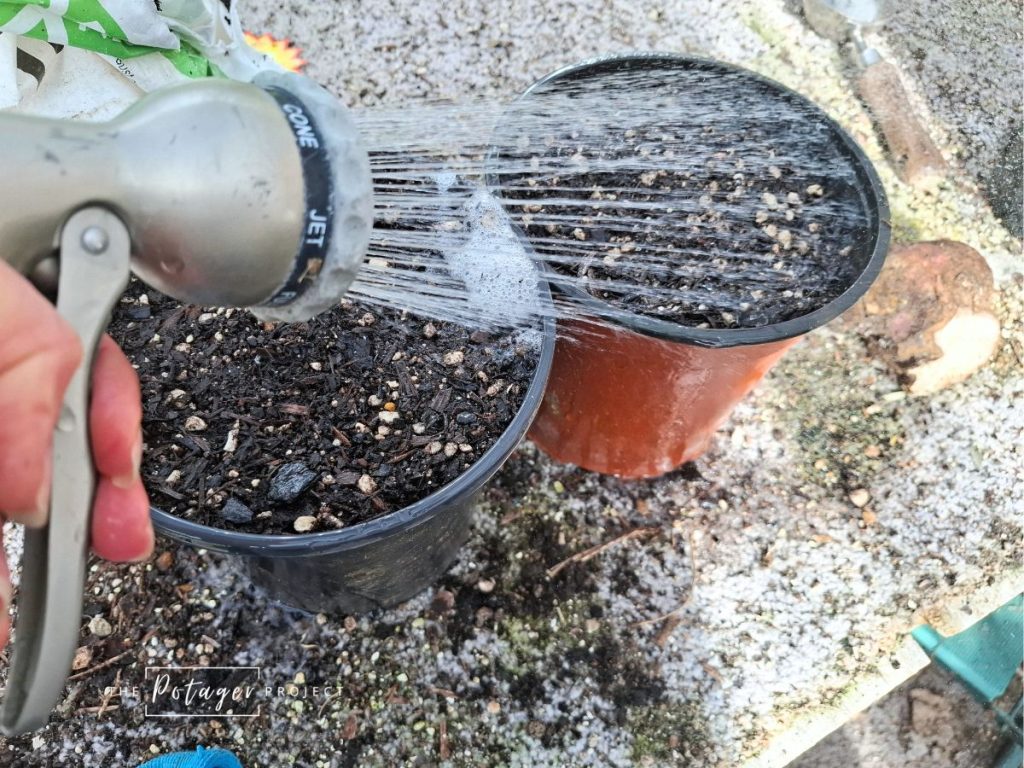
4) Place in a sunny windowsill, greenhouse, or under grow lights.
Over the next 6–10 weeks, the potatoes will send up leafy shoots — these are your slips!
Separating and Rooting Slips
When slips are 4 – 6 in (10–15 cm) tall with several leaves, they’re ready. Gently twist or snip them away from the mother tuber, being careful to ensure there is a root on each slip.
You can either:
- Root in water: Place slips in a jar until roots appear, then plant out.
- Root directly in soil: Plant slips straight into your garden using a good quality compost to help them get established.
I prefer the soil method as it’s less fuss!
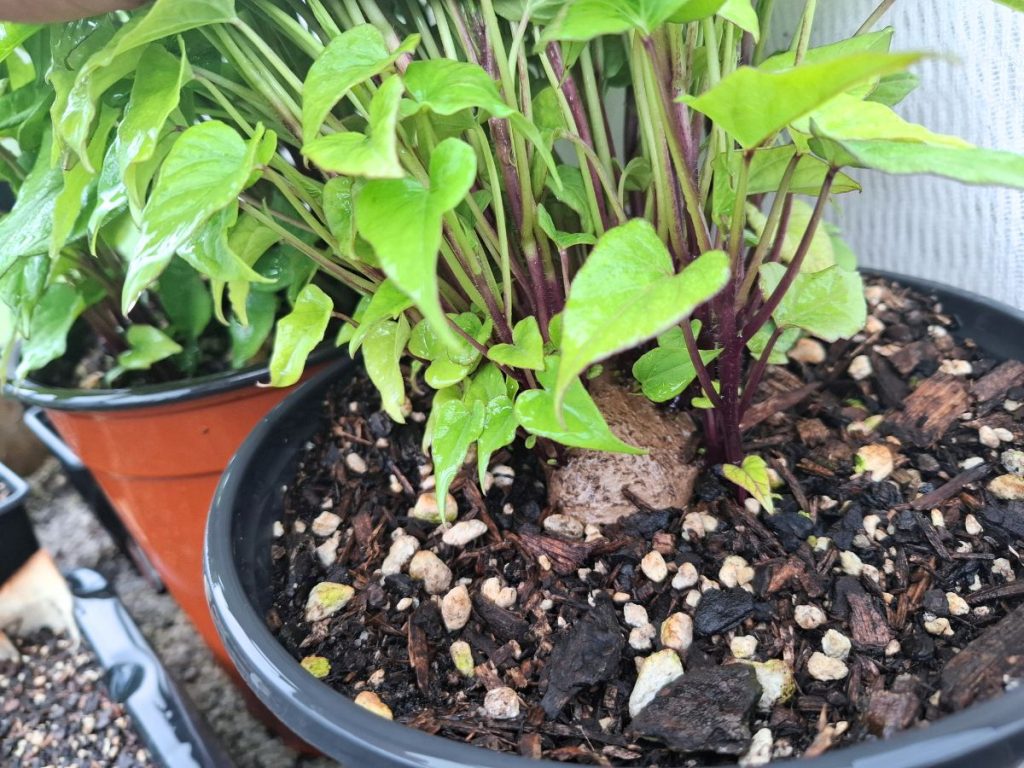
How to Plant Sweet Potato Slips (The Right Way)
Now that you’ve learn’t how to grow sweet potato slips, it’s time to plant! Here’s where sweet potato and kumara differs from most crops. Don’t plant the slips roots straight down like you would with tomatoes or lettuce seedlings. Instead:
- Form a loose mound of soil.
- Bend the slip base into a J-shape, with the root tip pointing upward.
- Angle the bottom of the J toward the rising sun (for us that’s east as I’m in the Southern Hemisphere).
Why? Because sweet potato/kumara grow downwards like fingers, not upwards like regular potatoes. Planting in a J-shape encourages lateral growth, ensuring they don’t grow too deep, making harvesting easier and improving yield.
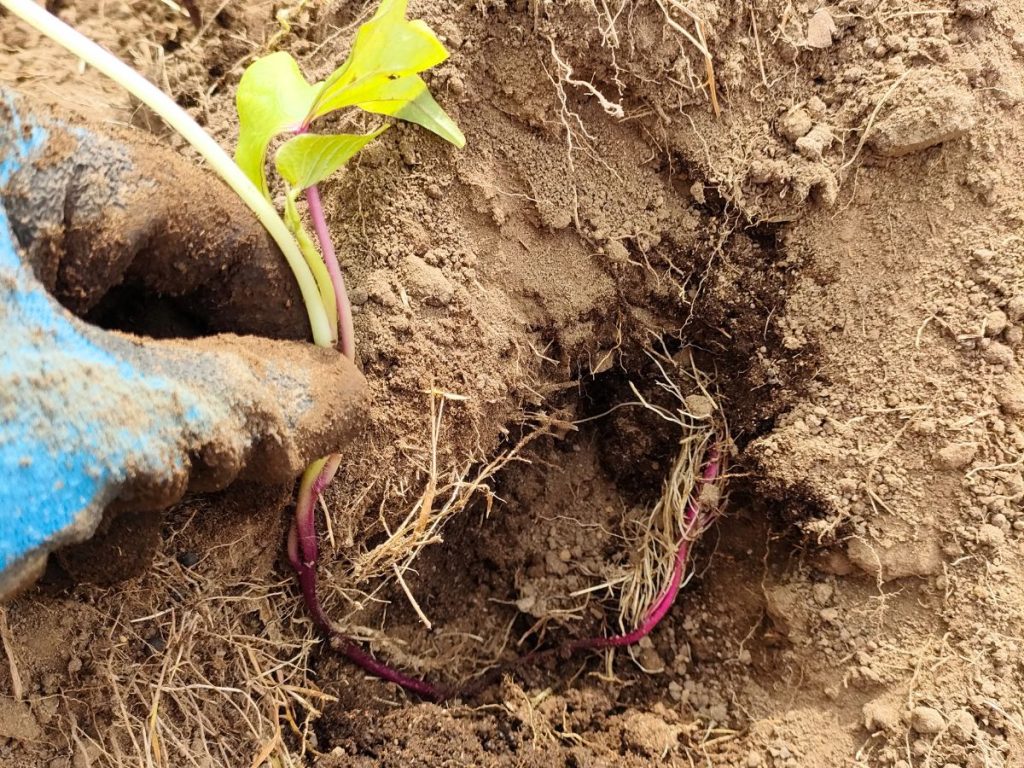
Caring for Your Sweet Potato Plants
- Sunlight: Sweet potato need at least 6 hours of full sun daily.
- Water: Keep soil moist until established (water daily!), then water only in dry spells.
- Mulch: Retains moisture and keeps weeds down.
- Spacing: 12–16 inches (30–40 cm) between plants. Vines will sprawl 3–4 feet in all directions.
- Lift vines: Prevent them from re-rooting into the soil. This directs energy into the original plant and creates big, healthy tubers.
Harvesting & Curing
Sweet potatoes take 4–5 months (90–120 days) from planting to harvest. They’re ready when the leaves yellow and die back.
Here’s how to harvest sweet potatoes when they time comes:
- Cut vines a foot from the crown.
- Gently dig around plants and lift tubers with care (skins are delicate).
- Cure in a warm, airy spot 75–81°F (24–27°C) for 7–10 days.
- Store at 54–61°F (12–16°C) in a dark, ventilated space.
Curing sweetens flavour and toughens skins so be careful not to skip this step.
Common Problems & Fixes
When learning how to grow sweet potato slips you may come across some of these common problems:
- Slips not sprouting? Sweet potato may have been treated. Use organic.
- Leggy slips? They need more light. Move closer to a window or grow lights.
- Yellowing leaves? Overwatering. Keep soil moist but never soggy.
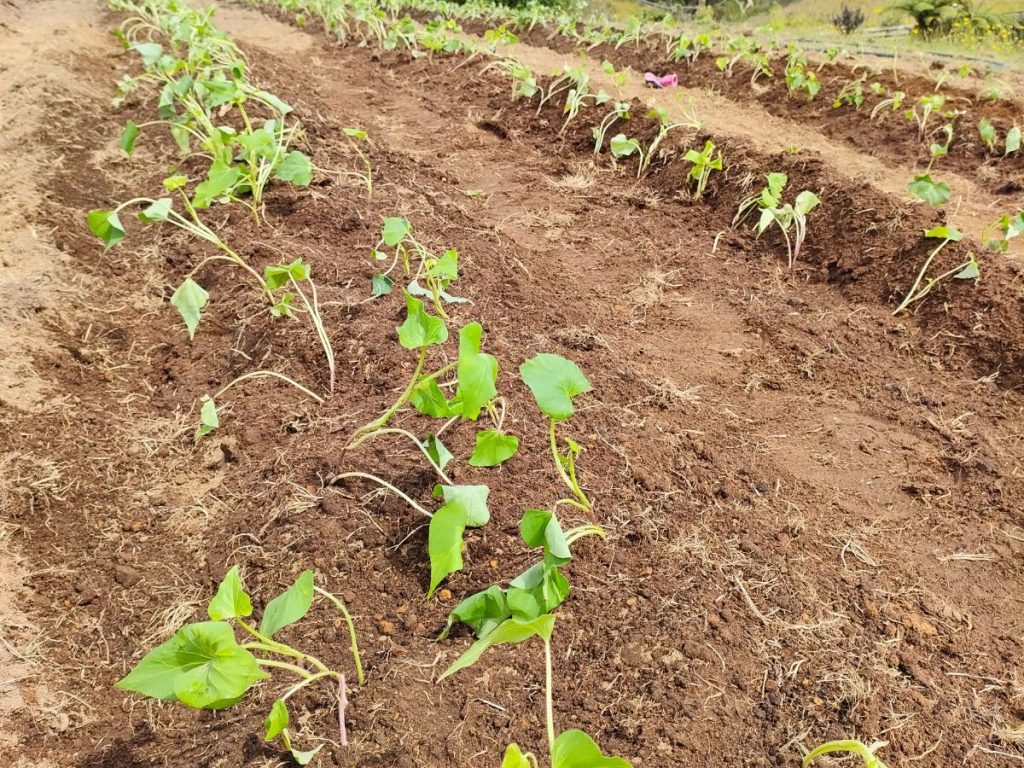
FAQs on How to Grow Sweet Potato Slips
How long does it take to grow sweet potato slips in soil?
It takes approximately 8–10 weeks from sprouting a sweet potato, to growing slips big enough to plant in the garden. It depends on how old the sweet potato is that you’re starting with – if it’s old and already sprouting, the faster your slip will grow.
Can I grow slips from supermarket sweet potato?
Yes, you can grow slips from supermarket sweet potato or kumara, but it’s best to choose organic to avoid tubers that may have been sprayed to prevent sprouting.
How many slips will I get from one sweet potato?
You will usually get 10–20 slips from one sweet potato, with each becoming a plant that yields several tubers!
When should I plant sweet potato slips outdoors?
Only plant sweet potato slips outside after your last frost date, once the soil has warmed up. One year I planted too early and a single frost wiped them all out!
Do kumara slips need special soil to grow?
Kumara/sweet potatoes thrive in loose, sandy soil enriched with compost. Avoid heavy clay unless it’s improved with organic matter.
How do I harvest sweet potato without damaging them?
To harvest sweet potato without damaging them, start 30 cm away from the crown, loosen the soil, and gently lift tubers with a fork.
Final Thoughts on Learning How to Grow Sweet Potato Slips
Growing sweet potato slips is one of those gardening projects that feels almost magical – turning a single root into baskets of food. With patience, the J-shaped planting method, and a little care, you’ll be rewarded with a crop of sweet, homegrown kumara in no time! If you’ve ever wondered whether it’s worth the effort, I can promise you this: learning how to grow sweet potato slips has been one of the most rewarding tasks in my garden – why not give it a try?

About the Author
Elle Reed is a passionate gardener and advocate for teaching beginner gardeners how to grow their own food. Elle’s mission is to inspire and empower people to get back to basics, grow their own produce, and embrace a sustainable lifestyle. “Whether it’s a few herb pots in an apartment, a potager or a full garden plot, we can all ‘start somewhere’ to grow our own food, and in doing so, provide healthier food for ourselves and those we love”.





